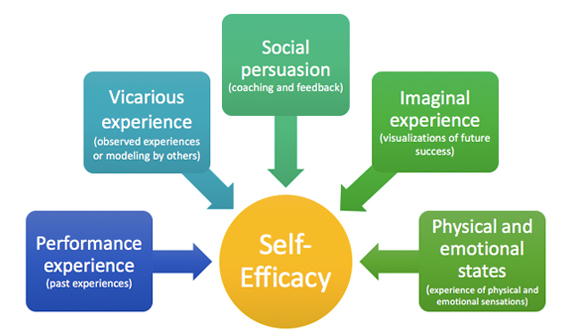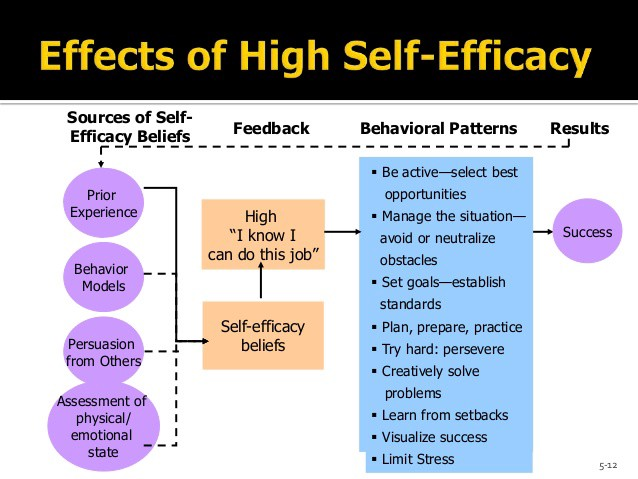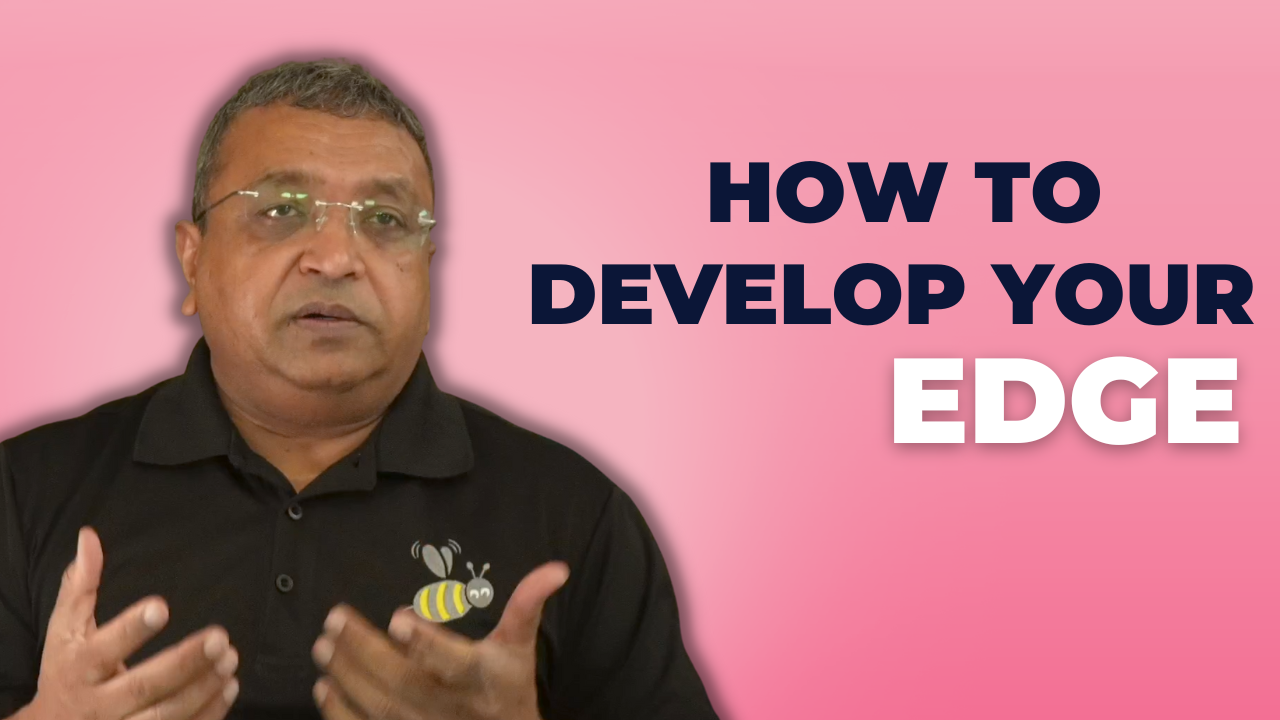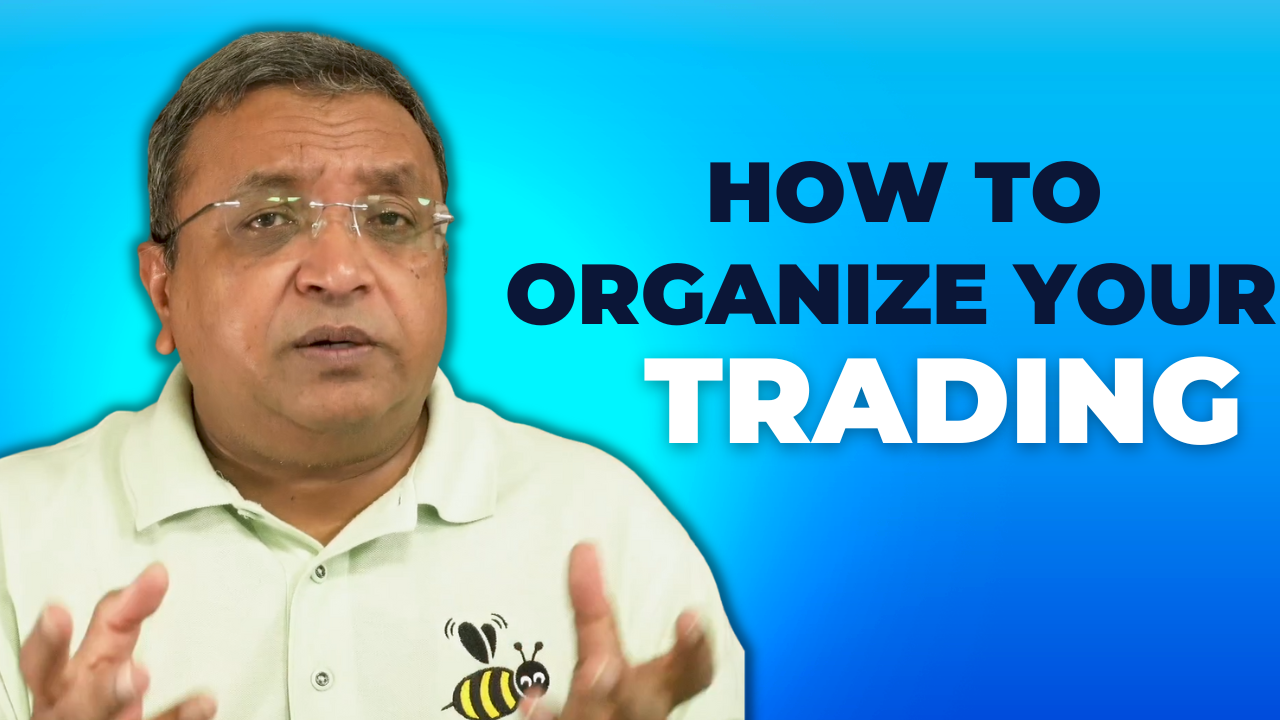
"If I have the belief that I can do it, I shall surely acquire the capacity to do it, even if I may not have it at the beginning." Mahatma Gandhi
The most important determinant of your success in trading or in your personal life is your self-efficacy beliefs.
In the last 20 years, I have talked to several successful traders including many very well-known traders, and interacted with them on regular basis and some of them are now personal friends.
One of the most compelling reasons why they are successful is they have high self-efficacy beliefs.
It is not their unique setup or scan or entry or exit or position sizing that can explain their success.
One thing that clearly separates traders who succeed and stay in-game for decades is their strong self-efficacy beliefs.
Because of their self-efficacy beliefs, they figured out profitable ways to trade. No one gave them a 1000-page manual on trading or held their hands when they were taking baby steps in trading. They figured out things for themselves. And they continue to tweak their approach to date.
Almost every successful trader I know of has developed their unique style on their own.
This is true of most Stockbee members also.
The days, months, and years they spent trying out different things and failing at it or losing money further enhanced their beliefs in their own capabilities.
Yes, they borrowed from some other traders ideas or books or courses but that is not the key to their success. They are self-made traders.
The most important determinant of your trading success will be your self-efficacy beliefs.
It might take a few days to understand that and some years. But once your self-efficacy beliefs about trading change things start to happen.
Once that is in place your self-talk will change to "hey I can do this", "hey I don't have all the answers but I am confident of finding the answers", and "hey I know how to bounce back from setbacks" .
When you attempt trading some find early success and some find early setbacks. That experience sets your self-efficacy beliefs.
Some people give up believing markets are too difficult or manipulated or beyond my understanding. Their self-efficacy beliefs dictate their behavior.
In the beginning year, I spent almost 18 to 20 hours trying various things going through hundreds of trading books, and testing hundreds of ideas.
The intense effort ultimately started paying off as more and more market and setup clarity started to show up and then I put my own method together and over the years modified it.
The same story repeats for most successful traders.
If you read Jesse Livermore's book it details how he developed his unique style after several efforts.
The Darvas book again details his struggle to develop his own method.
Every trader goes through the same phases as Livermore or Darvas or any other market wizards or successful traders like George Soros, Paul Tudor Jones, and Stanley Druckenmiller have also gone through the same learning curve and figured things out on their own.
In the Stockbee Advance Bootcamp, several traders presented and it is the same story for Stockbee members.
Once your self-efficacy beliefs specific to trading change you will start experiencing success.
That does not mean you will not have setbacks. If you have high self-efficacy you will find a method. If you don't have it, even the most profitable method will not work for you and you will keep finding faults with methods.
Self-efficacy beliefs are the biggest determinant of your trading success.
Unless you work on self-efficacy you will find many inhibitors and will be constantly dissatisfied with any method, guides, videos, or instructions, or site. You will constantly chase new methods, new scans, new claims, new gurus, new newsletters, and so on.
Psychologists have found that self-efficacy beliefs help determine how much effort people will expend on an activity, how long they will persevere when confronting obstacles, and how resilient they will be in the face of adverse situations. The higher the sense of efficacy, the greater the effort, persistence, and resilience.
Profitable trading involves all these challenges.
You need to put in a lot of effort to understand and internalize key concepts like equity selection, entries, exits, risk, and risk/reward and then put it all together.
In the process, you will have several setbacks and false starts. If you have enhanced self-efficacy beliefs you will persist in face of such adversities.
If you have a high sense of self-efficacy beliefs then you will spend time mastering trading software, mastering trading setups, and making them work. Absent that you will abandon your effort at the first hint of failure.
Learning to trade is not an easy task. It is one of the most challenging tasks you would handle in your life. Some are lucky and they find success instantly. For rest, it is a big battle.
People with a strong sense of self-efficacy beliefs approach difficult tasks as challenges to be mastered rather than as threats to be avoided. They have greater intrinsic motivation. That helps them to engage for long periods in activities and helps them overcome repeated obstacles. They do not have a discipline problem.
People with high self-efficacy beliefs set themselves challenging goals and maintain a strong commitment to them, and heighten and sustain their efforts in the face of failure.
People with high self-efficacy beliefs quickly recover their sense of efficacy after failures or setbacks and attribute failure to insufficient effort or deficient knowledge and skills that are acquirable rather than external circumstances.
Your self-efficacy beliefs also influence your thought patterns and emotional reactions.
This is critical in trading. You should not be overly excited by profit on a single trade and same way not get depressed by loss on a single trade. At the end of the day, trading is a probability game. High self-efficacy helps create feelings of serenity in approaching difficult tasks and activities and activities where the outcome is uncertain.
If you have low self-efficacy beliefs then often you believe that things are tougher than they really are. As a result, this belief fosters anxiety, stress, depression, loss of discipline, trading, and a feeling of being lost. You are unable to solve your own trading problem.
Psychologists believe that self-efficacy beliefs influence the level of accomplishment that one ultimately achieves.
Self-beliefs can also create the type of self-fulfilling prophecy in which one accomplishes what one believes one can accomplish. This further enhances self-efficacy beliefs. This leads to higher performance which, in turn, leads to higher effort and higher accomplishment which in turn further enhances self-efficacy.
The goal of this site is to constantly challenge you to enhance your self-efficacy beliefs. To constantly goad you to keep working on your self-efficacy beliefs. To challenge your existing beliefs. To provoke you to examine your current beliefs. To offer you a template for enhancing your self-efficacy beliefs.
If you do that then you will achieve your trading goals. And you will not need this site, or alerts, or alerts with sound effects.
Every day think of how you can enhance your trading-related self-efficacy beliefs.







 There are
There are 





 Break down each element of that setup
Break down each element of that setup What if I only trade low-priced stocks
What if I only trade low-priced stocks


